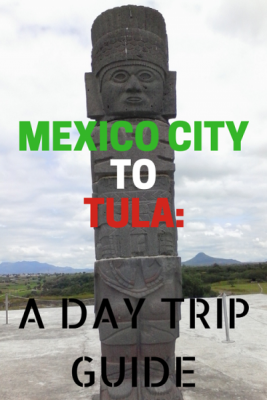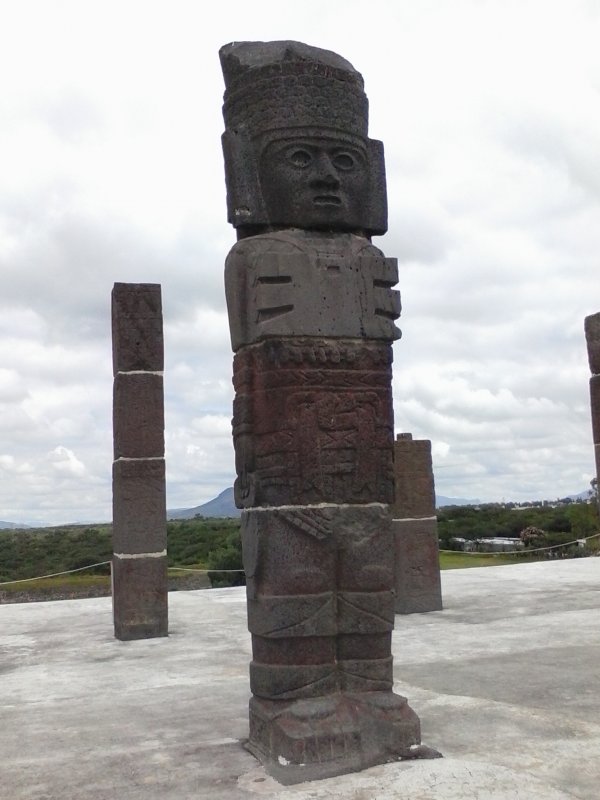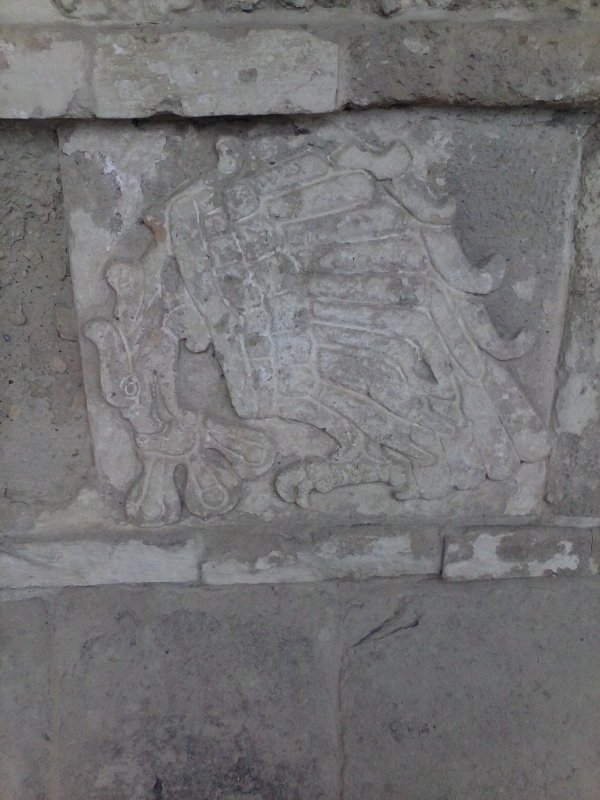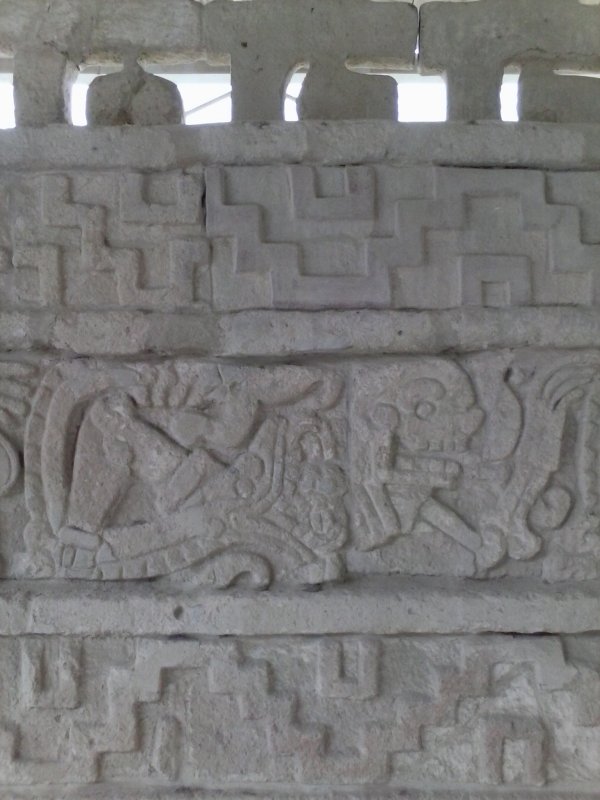Last Updated on November 3, 2020
Tula is a major archaeological site located 75 km (45 miles) north of Mexico City in the town of Tula de Allende, in Hidalgo State. Getting from Mexico City to Tula is easily done independently. This former Toltec capital is refreshingly free of crowds and touts and is definitely worth a look.
Getting From Mexico City To Tula.
Getting a bus from Mexico City to the ruins of Tula is simple and straightforward: from Mexico City’s Terminal Norte bus station, Ovnibus runs 1st class buses to Tula de Allende (1.5 hrs.) about once an hour for about 150 pesos each way. Also, AVM runs 2nd class buses for slightly less money (2 hrs.) every 15 minutes or so for 130 pesos. To get to Terminal Norte bus station take Metro Line 5 (yellow line) to Autobuses del Norte.
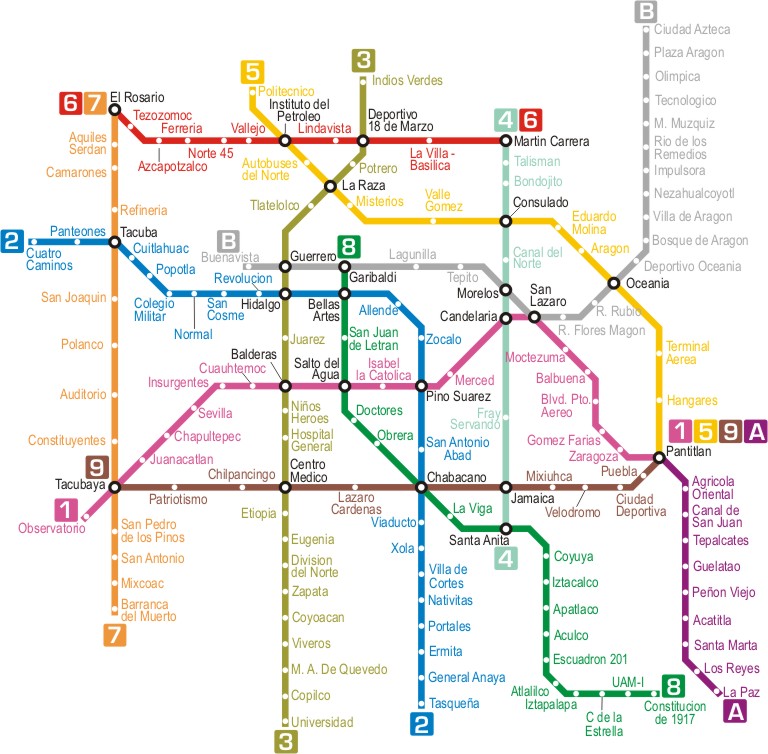
From Tula’s bus station turn right, then left 2 blocks on Avenida Manuel Rojo del Rio to the town center. From the center it’s a 20-minute walk north to the ruins; walk north up Avenida 5 de Mayo to a bridge, then right and uphill to the site entrance. Alternatively, take a cab from the bus station in Tula. Expect to pay 40 pesos for a ride to the site entrance.
Disclosure: This article contains affiliate links to products and services whereby we receive a nominal commission if you make a purchase through one of these links. This comes at no extra cost to you. Please see our Disclaimer for full information.
Find The Perfect Hotel or Some Unique Lodging Options During Your Visit to Mexico.
For unique accommodations you simply won’t beat Airbnb’s Mexico listings. Choose from hip and trendy lofts in the city, entire houses in the country or beachfront casitas – Airbnb has something for every budget!
Interested in conventional accommodation options instead? We recommend Hotels.com to search for a wide variety of rooms throughout Mexico. Choose from familiar chains, boutique properties or independent hotels throughout the country.
Tula de Allende is a typical work-a-day town not trying to impress anyone – and succeeding at it. That said, it’s a pleasant enough place and the ruins are definitely worth the trip. The bus ride to Tula de Allende alone makes for a pleasant day trip from Mexico City.
About Ancient Tula
The earliest evidence of any organized settlement in the immediate area dates from around 400 B.C. This may have been under political control from Teotihuacan, whose eventual fall laid the way for other city-states. Tula, derived from the Nahuatl phrase Tollan Xicocotitlan, started out as a scrappy outlier in a region dotted with competition.
A more organized settlement, known as Tula Chico, was occupied between 650 and 900 A.D and peaked during it’s first 100 years. During that time Tula Chico, with a population between 20,000 and 25,000, may have occupied over 6 km² (2.3 mi²). The bulk of this remains buried beneath the current site, known as Tula Grande.
For reasons unknown, people abandoned Tula Chico and Tula Grande consumed this location over time. This grew in size to perhaps 14km² (5.4 mi²) with a population of about 60,000. The central plaza alone held 100,000 people and testifies to the regional importance of this place. The economic base of Tula centered around the mining and crafting of obsidian and agriculture.
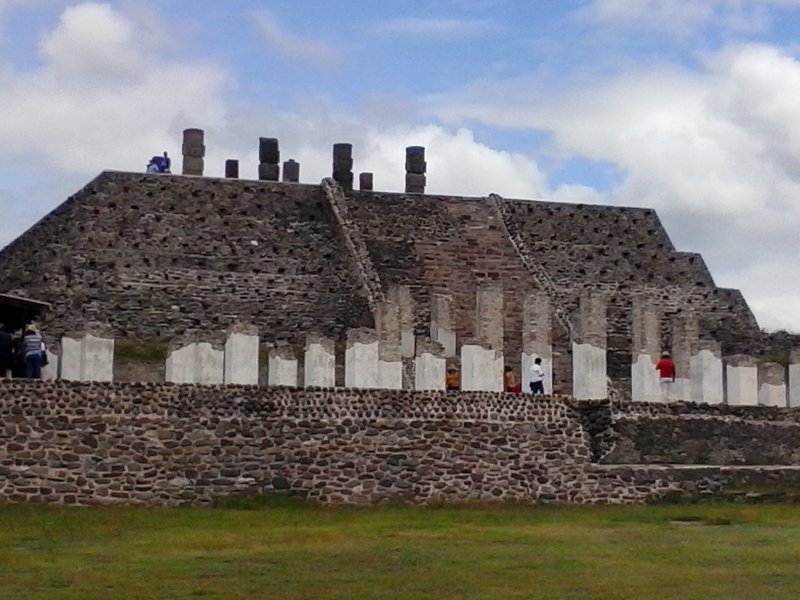
The once great Toltec capital was in ruin as the Aztec capital of Tenochtitlan thrived. Still, Tula was venerated in their myths because of it’s relation to the all-mighty serpent-god Quetzalcoatl. The city fell about 1150 because of environmental and social factors. Evidence strongly suggests people abandoned Tula and razed the ceremonial center during a fitfully drawn-out 30-year period.
Tula Today
Hours: 9:00 am – 5:00 pm Daily
Admission: 70 pesos
Website: inah.gob.mx
A small on-site museum displays ceramics, jewelry, metalwork and stone figures from ancient civilizations throughout Mexico. Your admission includes entry to the museum and all signs are in Spanish and English. Allow 30 minutes for the museum and about 2 hours for the ruins.
Thankfully, Tula is free of vendors and touts, allowing you to simply enjoy the ruins. The lack of visitors also adds to the pleasantness of this site. Informative signs throughout the site help you understand aspects of the architecture here.
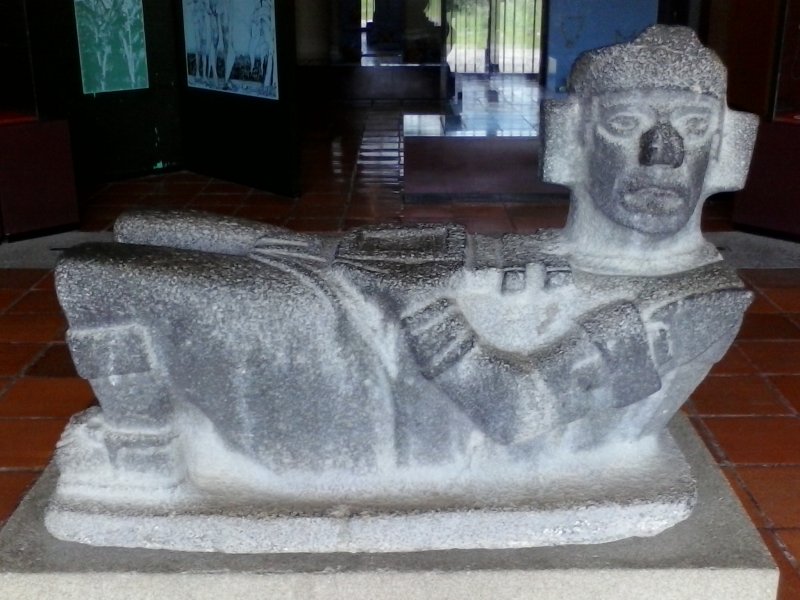
The site of Tula is most noteworthy for 15-foot tall basalt figures carved in the likeness of Toltec warriors. Found atop Pyramid B, known as the Pyramid of the Quetzalcoatl, these Atlantean figures still hold sentry above the site.
Atlantean figures are simply support pillars sculpted in the form of humans. In this case the figures represent four armored soldiers and are quite rare in Mexico. The four rather plain pillars behind these once supported a roof atop the pyramid along with the four Atlantean figures.
Plenty of macabre-looking carvings decorated this ancient city, mostly along the north wall of Pyramid B. Scenes such as snakes devouring skeletons, eagles eating hearts and ritual torture decorate this wall. As with many ancient civilizations in Mexico, Tulans were fond of the ballgame and 2 ball courts are found on-site.
In Conclusion…
Mexico is noteworthy because of her past civilizations and the vast cities they built. We are fortunate to be able to understand their world-view due to the variety of legacies they left behind. Their accomplishments amaze us today and continue to mystify experts. The Aztecs, who left a prolific ancient legacy in Mexico City and beyond, were only one such civilization.
The city of Tula de Allende and it’s proximity to the ruins make this an easier site to visit than Teotihuacan independently and provides a more pleasant experience all around. Of course, Tula cannot compare to the size and significance of Teotihuacan but it deserves a look – check it out!
Tula, like Teotihuacan, makes a great day trip from Mexico City. Enjoy this site independently and learn more about the ancient cities which flourished in the Valley of Mexico. Of course, explore more places around Mexico City on your own, too.
Pin Me Now!
